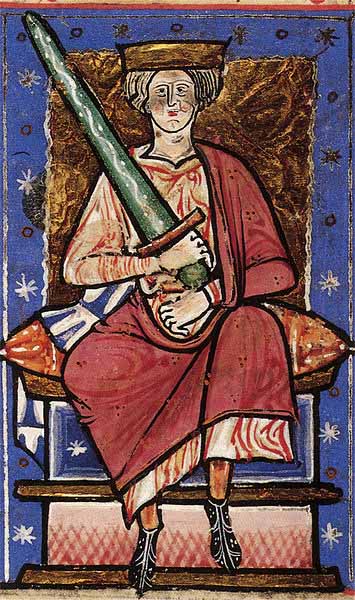A genetic relationship, either as half-brothers or as an uncle and a nephew, has been established between skeletal remains of two men who died on opposite ends of the North Sea. Estimated to have been buried between 960 AD and 1020 AD, the two men from the same Viking family have finally been reunited at an exhibition at Denmark’s National Museum more than 1000 years later, after their DNA was found to be matching – and that too was by chance!
While the first skeleton was discovered in England, presumably a part of the migration of Danish people who went to work as farmers in England in the 9th century, the second skeleton was found in central Denmark – 900 kilometers (559.23 miles) away. The former of the two men was in his 20s and died due to the English king ordering a massacre of Danes settled in England, while the latter died in his 50s, with a series of blows on his skull suggesting that he was a Nordic warrior who was part of many battles, according to The Guardian .

The older Viking man’s remains. ( Odense City Museums )
Analyzing the Skeletal Remains of the Viking Family Members
The skeleton in Denmark was discovered in 2005 near the town of Otterup in Central Denmark. His bones were analyzed and he was discovered to have been 6 feet tall (1.83 meters), suffered from a debilitating arthritis in most of his joints, and an inflammation that potentially suggested tuberculosis. He had a violent lesion on the left of his pelvis, that was the fatal blow, leading researchers to suspect that he was part of one of the many infamous Viking raids. “The wound from that blow may have cost him his life because it did not heal,” said Jesper Hansen, chief curator at Odense City Museums.
The skeleton in England was discovered in 2008 under the quadrangle at St. John’s College in Oxford, with the remains of 35 other young men between the tender ages of 16 and 25. They were massacred together on St. Brice’s Day in 1002, under the bumbling leadership of the Saxon King Aethelred the Unready. These men were obviously seeking refuge from townsfolk, who set fire to the building they were in.

The mass grave. ( National Museum of Denmark )
Their bodies have been subjected to repeated fatal blows – the skeleton in question had several stab wounds in the back and at least 9 puncture wounds on the skull, all from a sword. “He died of massive injuries from several types of weapons,” said Lasse Sørensen, head of research at the National Museum of Denmark. According to Euro News , the two skeletons will be put on display as part of an exhibition called ‘Totget’, which is Danish for ‘The Raid’, going up on June 26th at the National Museum of Denmark.

The Viking family members will be put on display as part of an exhibition called ‘Totget’, which is Danish for ‘The Raid,’ at the National Museum of Denmark. ( National Museum of Denmark )
This discovery was significant for many reasons, first and foremost being that DNA tracing between common folk has never been a practice followed. Only the nobility and historically ‘significant’ people have been accorded this dignity and importance. Copenhagen museum archaeologist Jeanette Varberg agrees, terming it “a big discovery” and “very rare”. She also added, “As an archaeologist, you have no clue if the skeleton you are excavating has any family members but new DNA technology and research are making it possible to discover if two skeletons are relatives.”
King Aethelred and the St. Brice’s Day Massacre
The cause of death of the relative who died in England is a result of the ineffective policies of the Saxon King Aethelred II , historically known as Aethelred the Unready, who ruled the English from 978 to 1013 and again from 1014 till his death in 1016. Aethelred had a long running battle with the Danes, and his inability to continue brokering peace like his predecessors, along with his persona as a weak ruler, led to small companies of Danes launching a series of raids on English sea-side territory in the 980s.
This included Hampshire, Dorset, Devon, and Cornwall, amongst others, and finally a brutal raid of west Sussex in 1001. After a series of humiliating defeats at the hands of the Danes, and fearing a plot to assassinate him by the local Danes, Aethelred ordered a massacre of the country’s Danish settlers in 1002, which is now known as St. Brice’s Day massacre. The victims included Gunhilde, who was Sweyn Forkbeard, King of Denmark’s, sister – this would ultimately cause the invasion of 1013 which cost Aethelred his throne.

Aethelred the Unready, circa 968-1016. Illuminated manuscript, The Chronicle of Abindon, c.1220. MS Cott. Claude B.VI folio 87, verso, The British Library. ( Public Domain )
The Vikings were Nordic seafarers, pirates, raiders, and plunderers who inhabited and ruled primarily south Scandinavian Europe between 793 AD and 1066 AD, but voyaged as far as the Mediterranean, North Africa, North America (this feat made them the first Europeans to reach North America), and the Middle East. A typical Viking bondior freeman, like the Otterup skeleton, most likely fought with a spear and a shield, and carried a seax (a type of small sword, knife or dagger) as a utility-knife and a side-arm.
Top image: Study reunites Viking family members separated by the North Sea for 1000 years. Source: National Museum of Denmark
By Rudra Bhushan
Related posts:
Views: 0
 RSS Feed
RSS Feed

















 June 13th, 2021
June 13th, 2021  Awake Goy
Awake Goy  Posted in
Posted in  Tags:
Tags: 
















